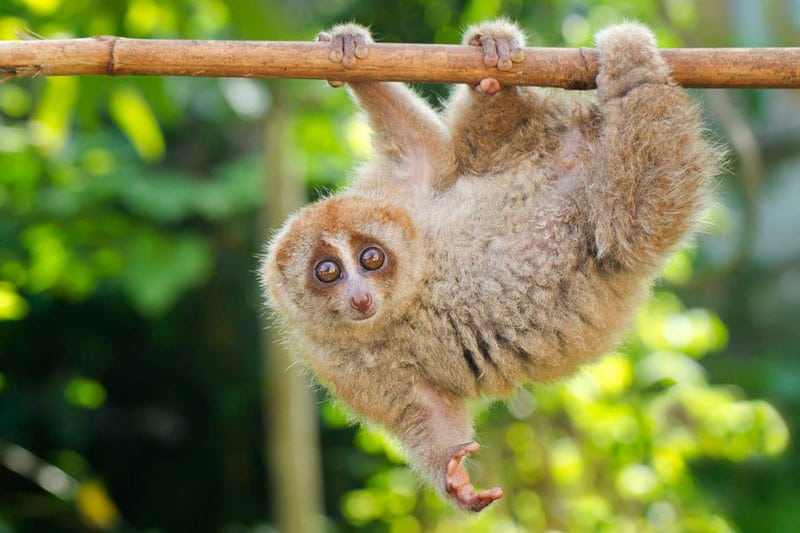
Slow Loris Facts
- Firstly, the term Slow Loris serves as the common name for eight known species of strepsirrhine primates. This is a small and highly specific suborder of primates native to one part of the world.
- Most notably, the most unique trait of animals in this remarkable group is that each of the species has a toxic bite. This fact makes this mammal the only known venomous primate on earth.
- Also, in general, the male Slow Loris is highly territorial and aggressive towards other males. In addition, its principal predators include large felines, sun bears, snakes, and eagles.
- Finally, several species of the Slow Loris list as Vulnerable on the IUCN Red List, and one lists as Critically Endangered.
Related Articles
Slow Loris Physical Description
All recognized species of Slow Loris have similar physical characteristics. In addition, some, though not all, display moderate degrees of sexual dimorphism.
While sizes quite naturally vary, a head and body length ranges from 7 – 15 in (18 – 38 cm). Meanwhile, average weight of mature adults of varying species ranges from 9.3 – 74 oz (265 – 2,100 gm).
Yet the heads of all varieties appear rounded, the eyes grow rather large, and the snouts develop narrow. The various kinds also present widely varied colored patterns.
Further, the trunk grows elongated. The arms and legs measure roughly equal in length, and all four limbs also possess a pincer-like grip. This provides an advantage for grasping tree limbs.
- Kingdom: Animalia
- Phylum: Chordata
- Class: Mammalia
- Order: Primates
- Family: Lorisidae
- Genus: Nycticebus
Slow Loris Distribution, Habitat, and Ecology
Some of the varieties of Slow Loris appear throughout the general habitat range. Others remain endemic to only a very small region. There also exists one pygmy species, endemic to Laos, Vietnam, and Cambodia. The various types all evolved as endemic to southern and southeastern Asia.
The preferred climates for all forms consist of tropical and subtropical. Individuals typically inhabit mangrove forests, bamboo groves, and also rainforests.
Generally, the denser the forest canopy, the greater the population of these primates. The animal does move rather slowly and deliberately through the trees and rarely leaves the relative safety of those trees.
In addition, the Slow Loris is predominantly nocturnal. It will sleep during the day, typically alone. At night it will forage through the trees for food.
This mammal is omnivorous in its eating habits. It will typically eat arthropods, insects, small reptiles and birds, fruits, and a variety of vegetation. It has also been observed to consume insects that other insectivores avoid.
Species Sharing Its Range
Check out our other articles on 6 Magnificent Carnivorous Plants, Yellow-Eyed Penguin, Bay of Islands, Green Sea Turtle, Feather Starfish, Lord Howe Island Stick Insect, Executioner Wasp
